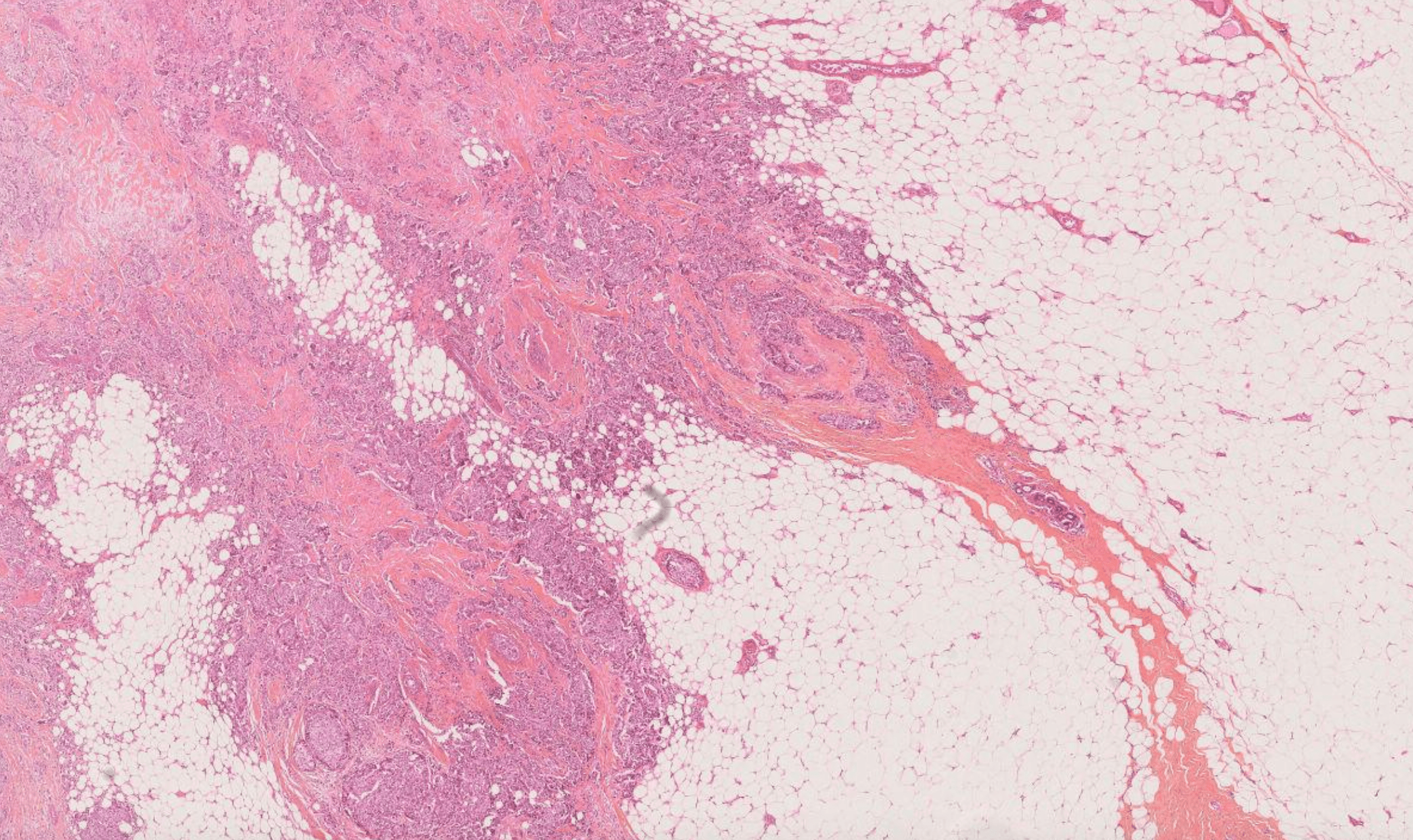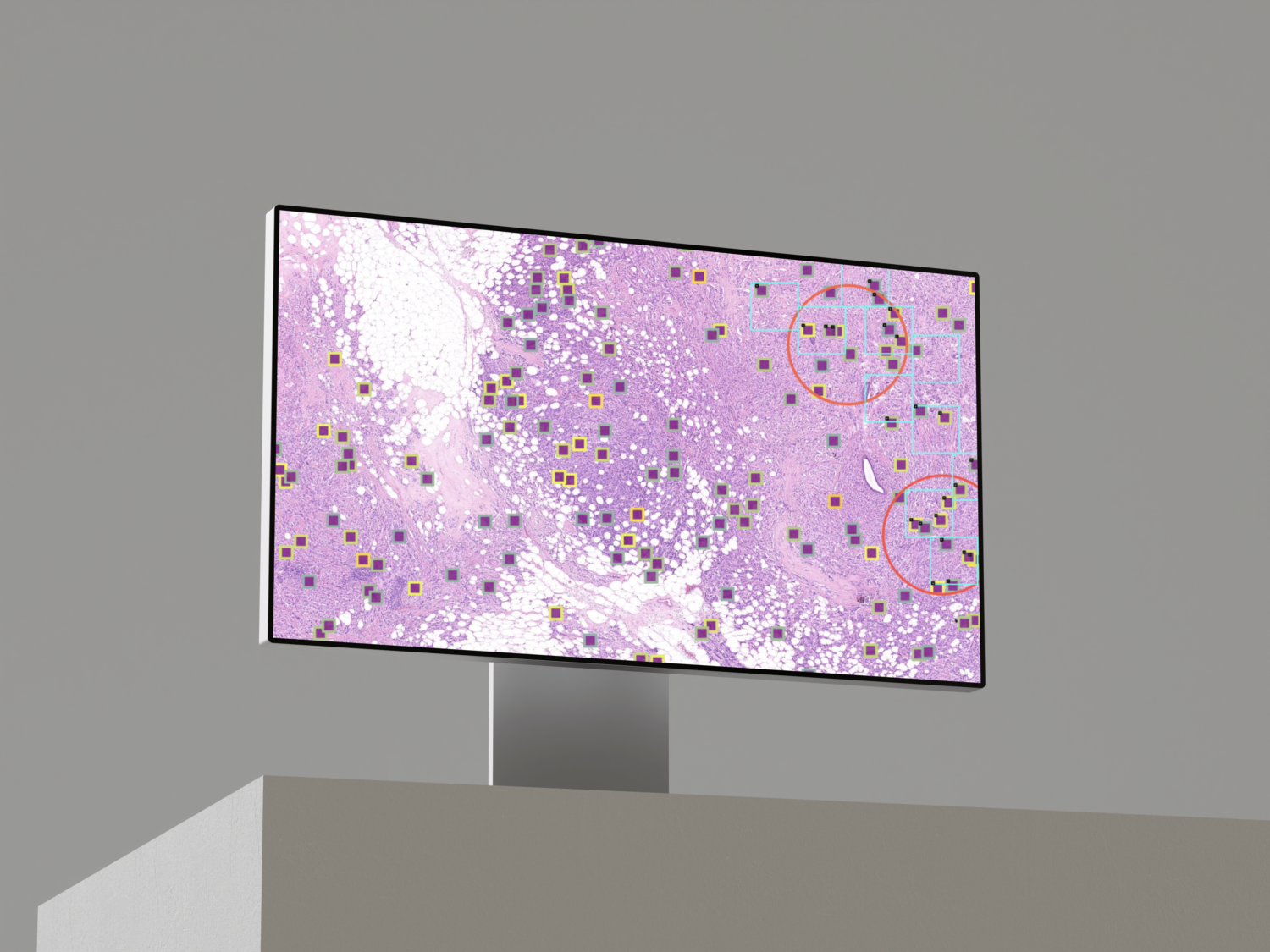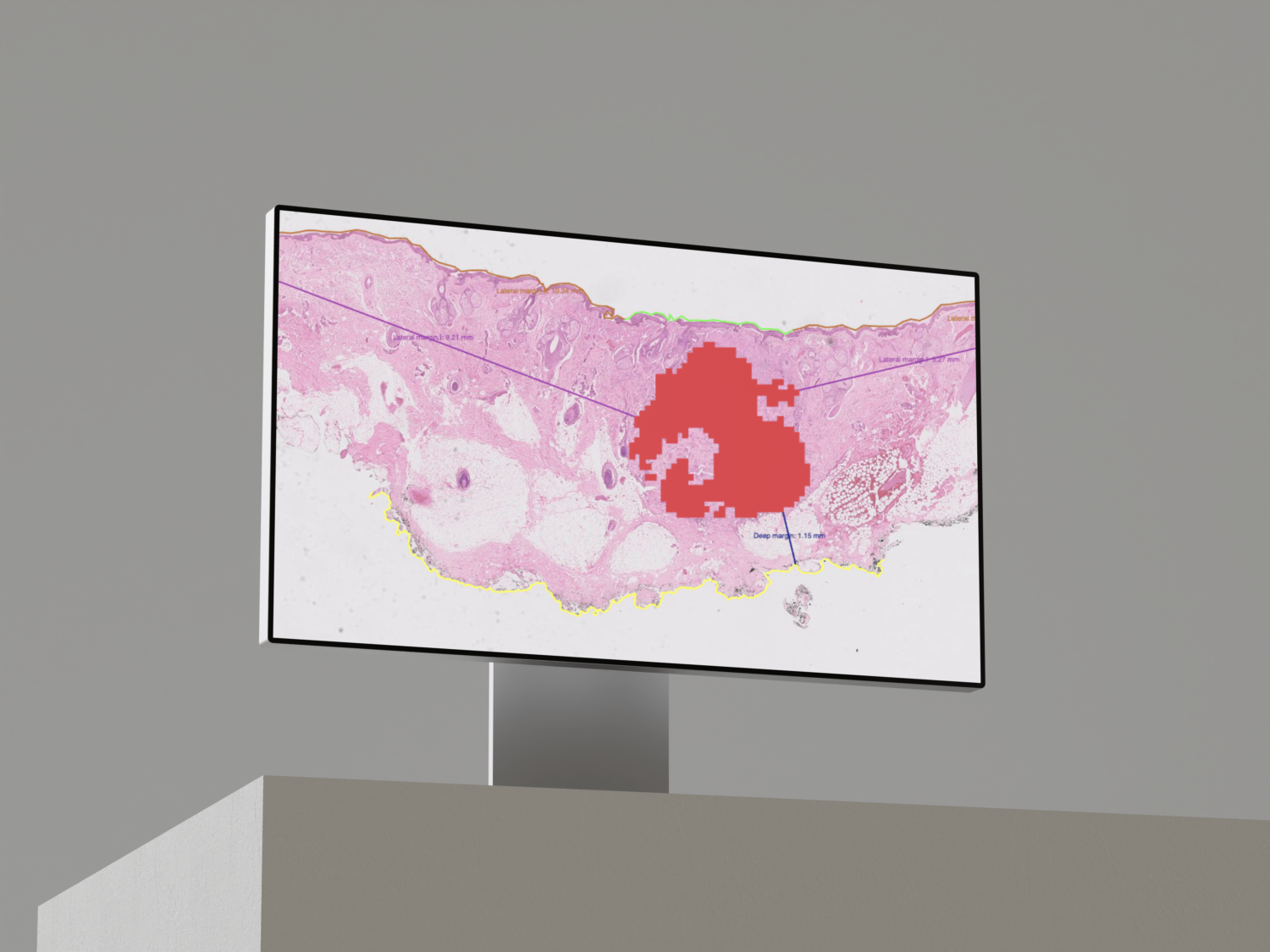SCIENTIFIC PUBLICATION
Standardized CycleGAN Training for Unsupervised Stain Adaptation in Invasive Carcinoma Classification for Breast Histopathology.

Purpose
Generalization is one of the main challenges of computational pathology. Slide preparation heterogeneity and the diversity of scanners lead to poor model performance when used on data from medical centers not seen during training. In order to achieve stain invariance for breast invasive carcinoma patch classification, we implement a stain translation strategy using cycleGANs for unsupervised image-to-image translation. Those models often suffer from a lack of proper metrics to monitor and stop the training at a particular point. We also introduce a method to solve this issue.
Approach
We compare three CycleGAN-based approaches to a baseline classification model obtained without any stain invariance strategy. Two of the proposed approaches use CycleGAN’s translations at inference or training to build stain-specific classification models. The last method uses them for stain data augmentation during training. This constrains the classification model to learn stain-invariant features. Regarding CycleGANs’ training monitoring, we leverage Fréchet inception distance between generated and real samples and use it as a stopping criterion. We compare CycleGANs’ models stopped using this criterion and models stopped at a fixed number of epochs.
Results
Baseline metrics are set by training and testing the baseline classification model on a reference stain. We assessed performances using three medical centers with H&E and H&E&S staining. Every approach tested in this study improves baseline metrics without needing labels on target stains. The stain augmentation-based approach produced the best results on every stain. Each method’s pros and cons are studied and discussed. Moreover, FID stopping criterion proves superiority to methods using a predefined number of training epoch and has the benefit of not requiring any visual inspection of CycleGAN results.
Conclusion
We introduce a method to attain stain invariance for breast invasive carcinoma classification by leveraging CycleGAN’s abilities to produce realistic translations between various stains. Moreover, we propose a systematical method for scheduling CycleGANs’ trainings by using FID as a stopping criterion and prove its superiority to other methods. Finally, we give an insight on the minimal amount of data required for CycleGAN training in a digital histopathology setting.
.

